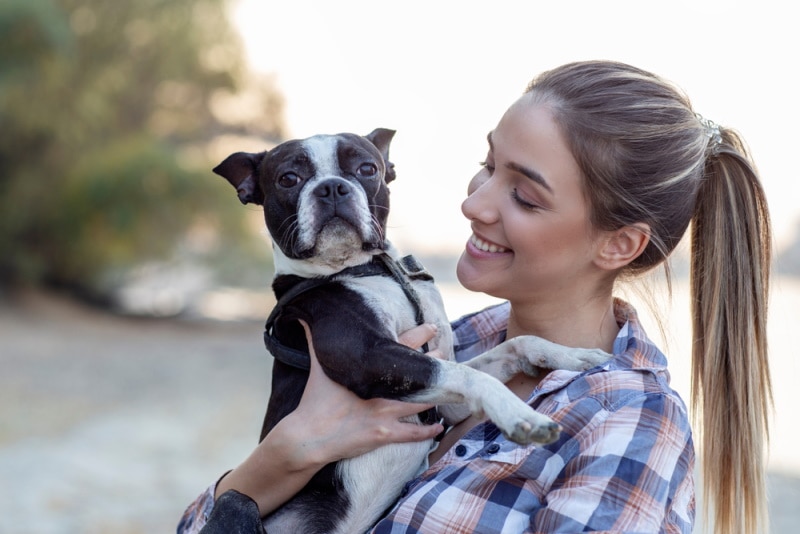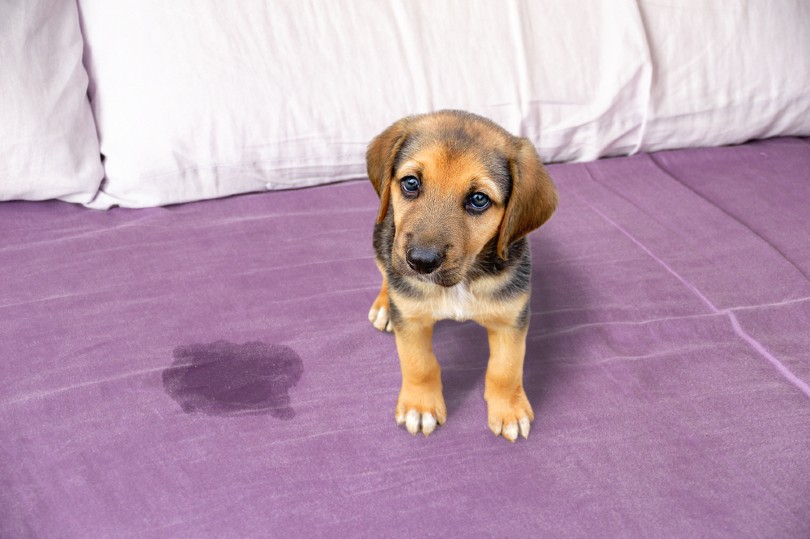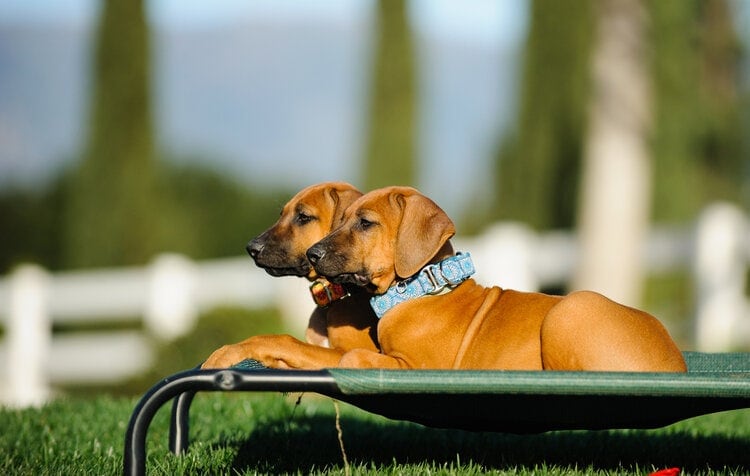How to Train a Great Pyrenees: 10 Expert Tips
By Kit Copson
Updated on
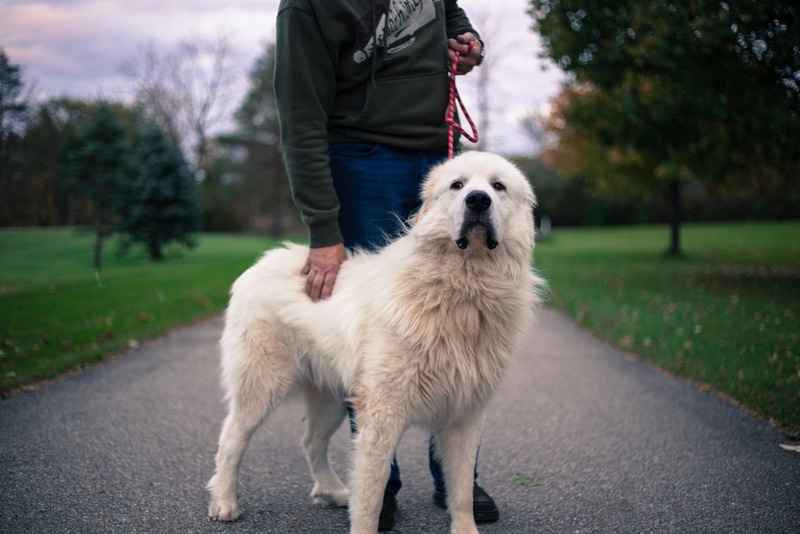
The Great Pyrenees is a mountain of a dog with a giant heart to match, but training one of these intelligent dogs can be somewhat challenging. Great Pyrenees have throughout history worked as flock guardians, so were bred for specific traits like intelligence, independence, and steadfastness.
These traits, while positive, can make training a challenge because the Great Pyrenees has a tendency to quickly get bored of the repetition and simplicity involved in teaching basic commands. That said, it isn’t impossible, and we’ve compiled these tips for all the Pyrenees parents out there.
What Should My Great Pyrenees Learn?
The goal of training your Great Pyrenees is to make sure they grow up to be well-mannered and know how to respond with confidence to a variety of common situations, like meeting other dogs in the park. Here are some of the very basics your Pyrenees should learn and that you’ll need to consistently reinforce:
- “Sit”
- “Stay”
- “Come”
- “Down”
- “Leave it”
- “Off”
- “No”
- “Heel”
- Loose-leash walking
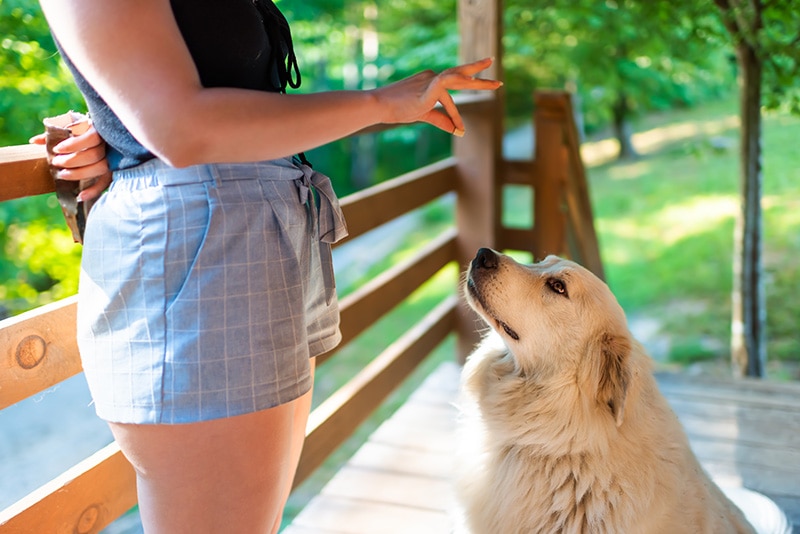
Training a Great Pyrenees: What You’ll Need
- Rewards (treats)
- Long leash (for teaching off-leash behavior)
- Short leash (for public areas)
- No-pull harness (optional)
- Lots of patience
The 10 Tips for Training a Great Pyrenees
1. Figure Out What Motivates Your Pyrenees
Not every dog is motivated by treats; some dogs are motivated by play, like chasing a ball, and some are motivated by praise. One of the first steps in training is figuring out what your dog is motivated by, as this is what you’ll use during training sessions.
If your dog likes a variety of rewards, vary them during training to keep things exciting—this is especially important for the easily bored Great Pyrenees.
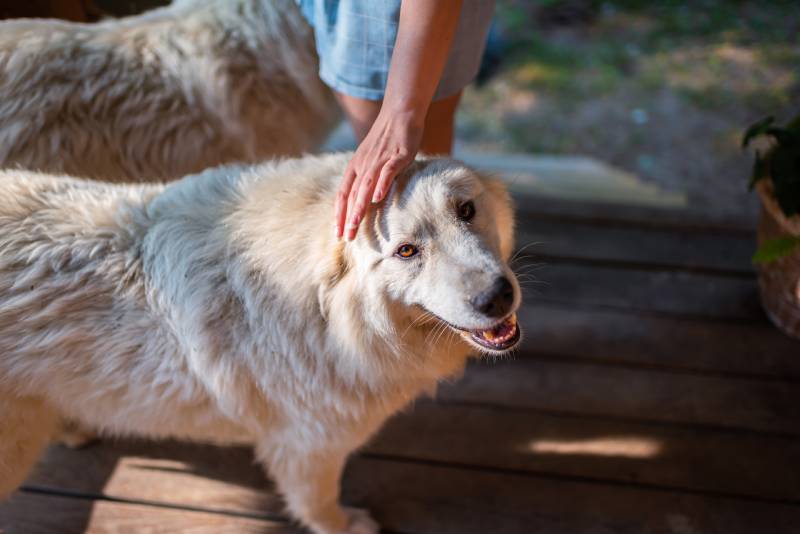
2. Keep Distractions at Bay
It’s best to start working on making a model citizen out of your Pyrenees in a quiet area free of distractions. Your Pyrenees will encounter a number of distractions out in the big wide world, but it’s wise to build up to this rather than throwing your dog in at the deep end.
When you’ve practiced a bit in distraction-free zones, you can build up to taking your Pyrenees into public places with varying levels of busyness and practicing in these places.
3. Stick to Short Sessions
Working on basic commands can be challenging with Great Pyrenees because they’re perfectly capable of doing what you say, but they have a tendency to get fed up quickly. Instead of doing long-drawn-out sessions, try to stick to sessions lasting 10 minutes at a time, and remember to end up on a high by making sure your Pyrenees does something they get rewarded for.
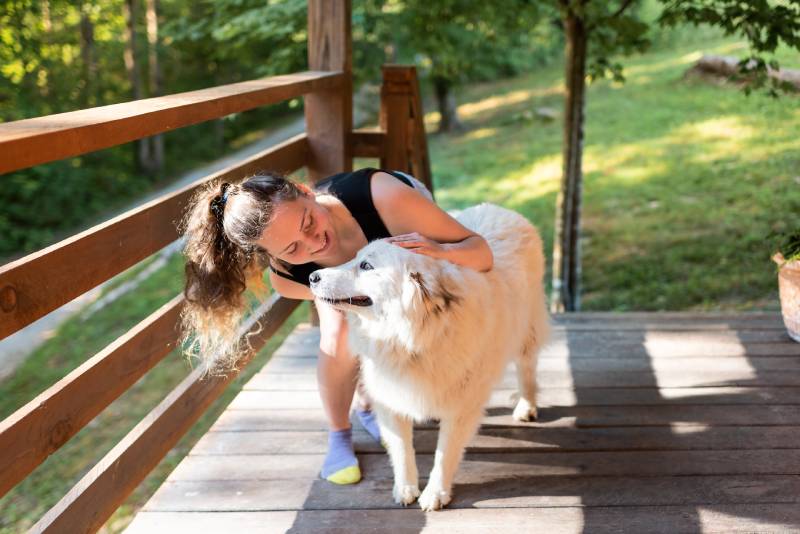
4. Bond with Your Pyrenees
Training will be futile if you don’t have a good bond with your Great Pyrenees. These dogs may have an independent streak, but they’re also rather sensitive souls and thrive on the bond they build with you.
Don’t make everything all about training—take the time to play with your Pyrenees, cuddle with them, and make a fuss of them, too. This sensitive dog is much more likely to work harder for you if you have a bond built on fun and trust.
5. Use Positive Reinforcement
Instead of focusing on your Pyrenees’ mistakes during training, focus on rewarding and praising any signs of good behavior. For example, if your Pyrenees comes when called or sits when asked, reward them and heap on the praise straight away to mark the good behavior. Being harsh doesn’t work and only drives a wedge between you and your dog, which will make your dog unwilling to cooperate.
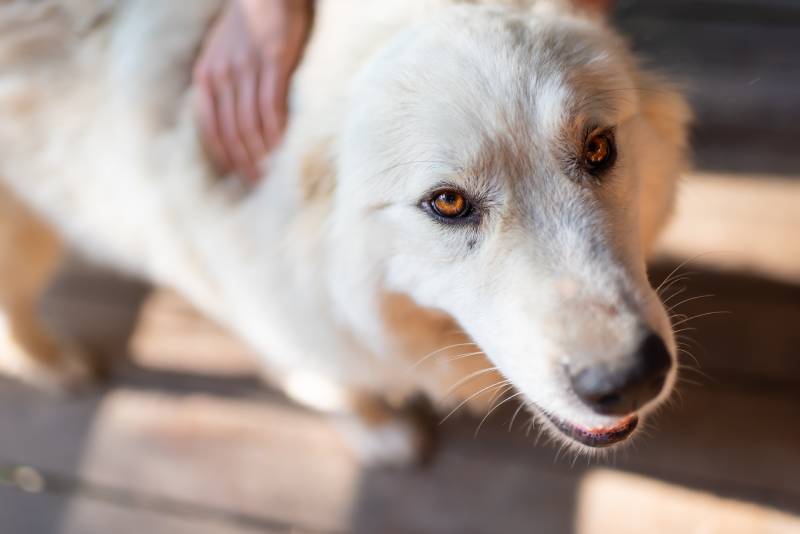
6. Don’t Reinforce Unwanted Behavior
It’s very easy to unconsciously reward unwanted behaviors simply by responding to them. For example, let’s say your Pyrenees is barking at you to demand your attention. Instead of responding or acknowledging this behavior, ignore the dog until they’ve calmed down. This shows your Great Pyrenees that calm behavior gets your attention and demanding behavior does not.
7. Be Calm, Confident, and Consistent
It’s important to remember that you are the pack leader, not the other way around. Dogs respond better to and show more respect for leaders who are calm, consistent, and confident at all times. If you get frazzled, take a deep breath and remember that your dog is a dog—they’re not behaving in a certain way out of spite but rather because they still have some work to do, that’s all.
Don’t mistake firmness for harshness. While being harsh may mean yelling or using physical punishment, being firm means setting boundaries for what is and isn’t acceptable and responding to unwanted behavior calmly and quickly. Instead of yelling, if you need to speak to your dog, do so in a low-pitched, low-volume voice.
In addition, consistency is of the essence when training a Pyrenees. They might seem to have training down as puppies, but then hit their “teenage” phase and start to forget the basics. Keep practicing on a daily basis as your Pyrenees grows and develops through all life stages.
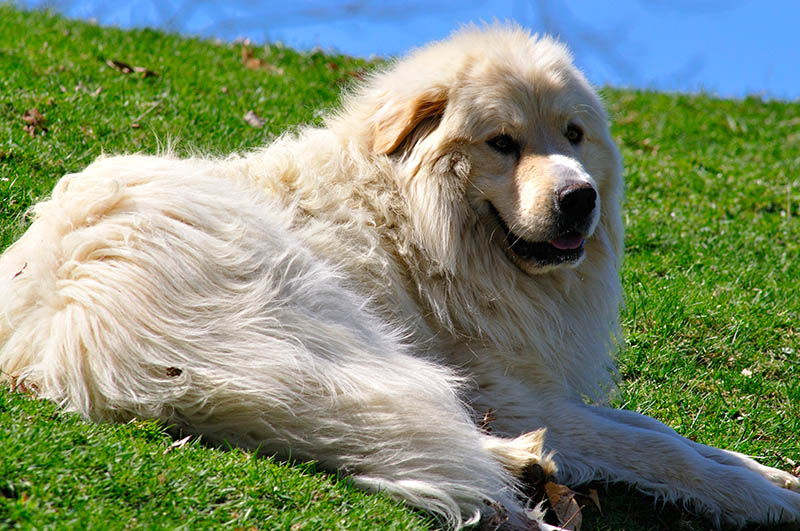
8. Gather the Right Supplies
In addition to rewards, a variety of walking apparatus can be useful for teaching your dog how to behave when out on the leash. A short leash keeps your dog close to you on the street and in other public places and is useful for teaching your dog to heel (walk at your side). You might also consider using a no-pull harness.
A long leash is great for starting out in areas where dogs are allowed to be off-leash—like dog parks—as they can help you practice recall without the risk of your dog running away. They also give your dog a little more freedom while making sure you stay in control.
9. Avoid Repeating Commands
Repeating commands sends your Pyrenees the message that it’s not necessary to respond to you the first time and desensitizes them to the importance of the command. This can be dangerous in situations when your dog’s life is in danger. For example, your dog is about to run in the road and doesn’t respond to your calls to “come” because they’ve heard it a million times without responding in the past.
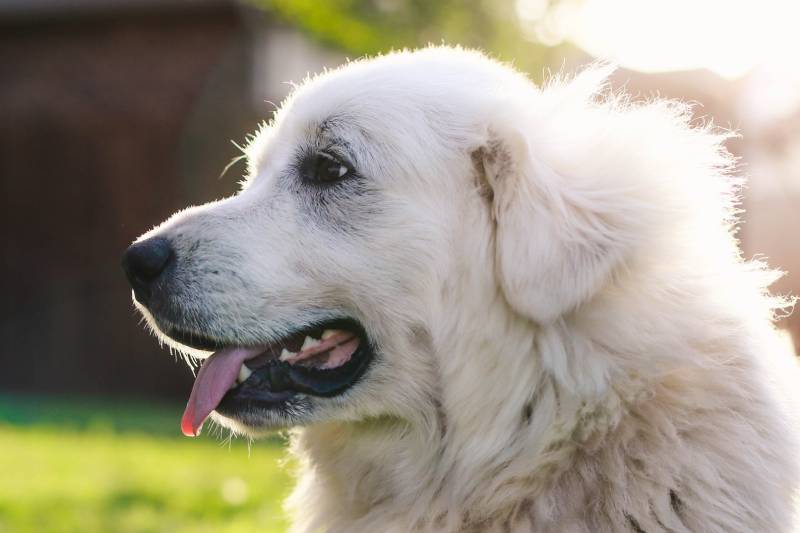
10. Rely on Humor
Training a Great Pyrenees can sometimes feel like one of those “If you don’t laugh, you’ll cry” situations. Don’t be too hard on yourself and keep a good sense of humor about things. Your Pyrenees dove into a gigantic mud puddle in the park instead of coming when you called them? Get them in the bath, laugh it off, and try again tomorrow. Most importantly, never give up—it will come!
Final Thoughts
Training a Great Pyrenees to be a model canine citizen isn’t something that happens overnight: it’s a long-term project that takes time, patience, and consistency. Don’t be afraid to take a step back and go over the basics again if your Pyrenees doesn’t seem to be catching on. Each dog learns at their own pace.
In addition to at-home training, it’s a good idea to enroll your Pyrenees in obedience classes to get some tips from the pros and give them a good start socializing with other dogs. If you’re finding the training process too challenging, a professional dog trainer can help.
Featured Image Credit: Cody Hanson Photography, Shutterstock

